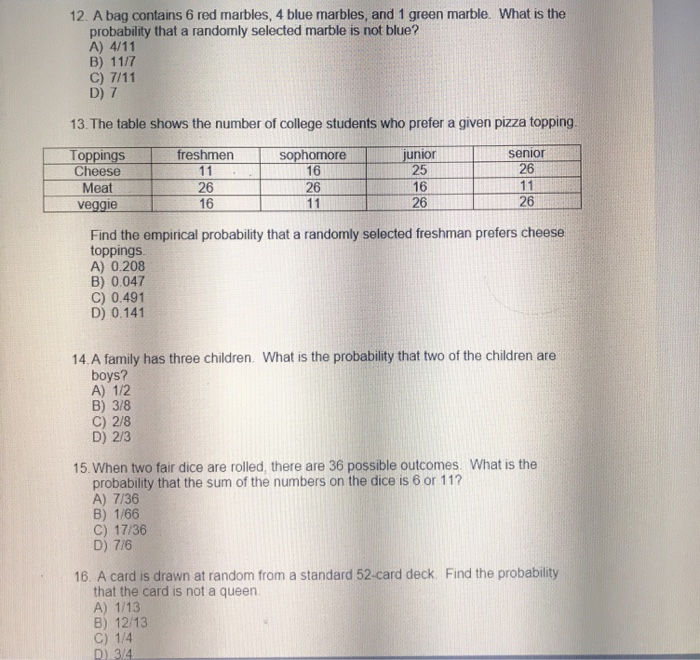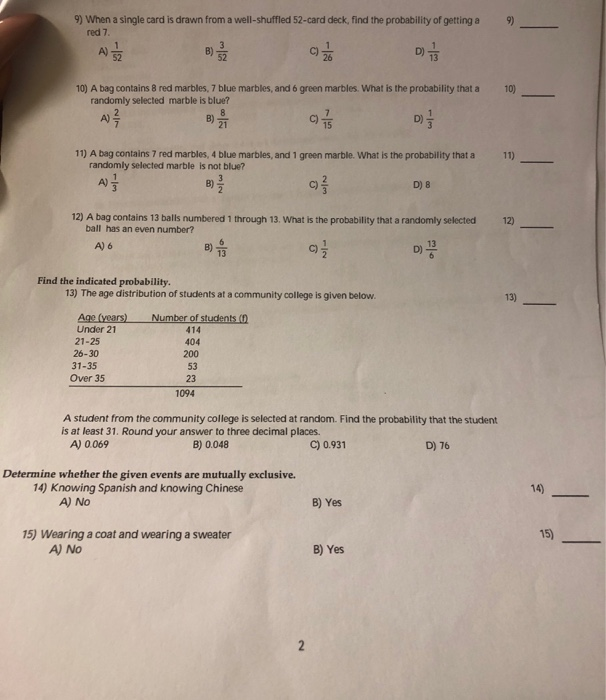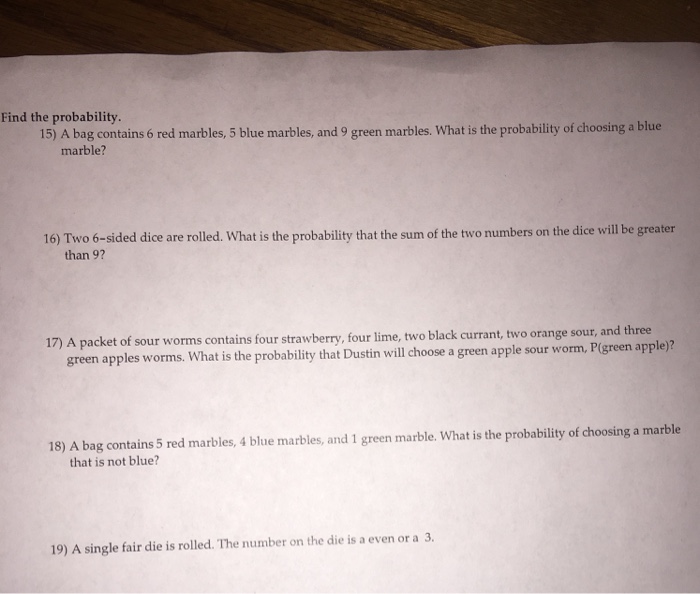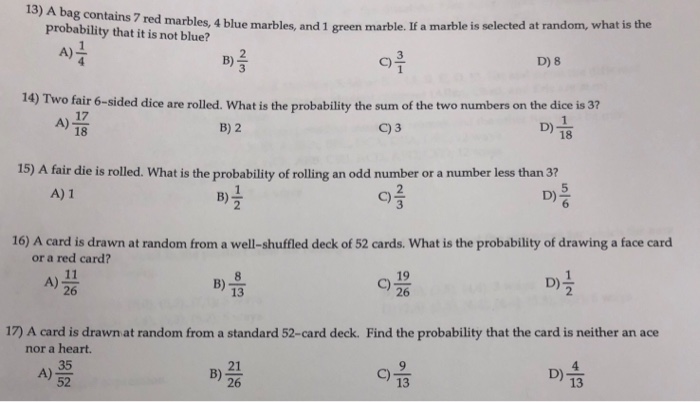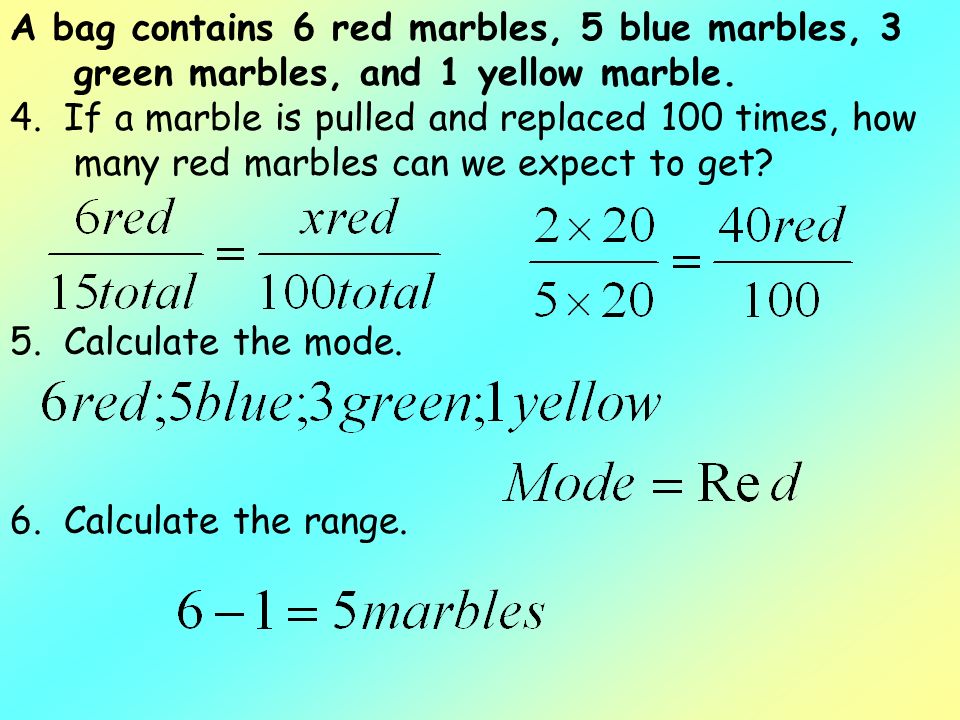This is harder because we are drawing marbles in an order but we don t care about which order we.
A bag contains 6 red marbles 2 blue marbles and 1 green marble find p not blue.
It will turn dark tonight after the sun sets completeley.
8 6 4 18.
Not replaced and then another marble is selected.
4 18 22 2.
If 5 light bulbs.
20 marbles are in the bag four of them are blue.
If a marble is randomly selected from the bag what is the probability that it is blue.
What is the probability you draw 1 red 1 yellow and 1 blue.
A bag contains 3 red marbles 5 green marbles and 2 blue marbles.
Remember that first you need to select the red marble 33 3 then select the green marble 22 2.
The first is replaced before the second is drawn.
Two consecutive draws are made from the bag without replacement of the first draw.
Two marbles are drawn.
What is the probability that the sum of the two numbers on the dice will be 3.
Red yellow and blue a jar contains 30 red marbles 12 yellow marbles 8 green marbles and 5 blue marbles you draw and replace marbles 3 times.
A bag of marbles contains six red marbles four blue marbles eight green marbles and two yellow marbles.
If a marble is selected at random what is the probability that is is not blue.
Calculate the expected value of the random variable.
6 18 33 3.
In order to find the probability of picking a yellow marble from a bag we have to first determine the number of possible outcomes and then how many of them meet our constraints.
A marble is selected at random from the bag and.
A bag contains 5 red marbles 4 blue marbles and 1 green marble.
A bin contains 72 light bulbs of which 10 are defective.
A bag contains 5 red marbles 4 blue marbles and 1 green marble.
Express the indicated degree of likelihood as a probability value.
The probability of picking a blue one is 4 20.
A random variable assigns the number of red marbles to each outcome.
A bag contains 4 yellow 2 red and 6 green marbles.
A bag contains 2 red marbles 3 blue marbles and 7 green marbles.

